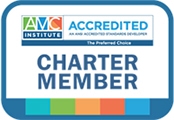Have you ever scrolled through your association’s Board page and thought, “a lot of these folks are kind of similar?”
Has your Board ever felt infiltrated by a newly elected board member whose ideas and processes were unlike that of those who traditionally sat in that chair?
Have you yourself ever felt as though you were an outsider on your association’s board?
As many of our associations continue to grow in diversity, across states, countries, genders, and political ideals, our boards develop and eventually reflect this shift in membership. There are a few key takeaways from research that are especially important to recognize in order to maintain trust, transparency, and effective communication, the list goes on.
Since boards are episodic decision-making groups, as opposed to groups who need to construct effective decisions together on a daily basis, their tasks are usually cognitive, making decisions, setting processes, considering facts, and predicting outcomes all for the good of their association. When cognitive conflict arises over these discussions, as it often does, it is usually performance-enhancing.
Effective boards are able to focus on a task or issue and debate until they find a creative solution. As conflict management coach and author Mary Rafferty states, “The parties might argue and exchange views vigorously yet there is two-way communication and openness to hearing each other. The goal is to find the best possible solution rather than to win the argument. Alternative perspectives are seen as valuable rather than threatening.” On the other hand, when affective conflict arises, boards can experience set-backs, as the mindset moves from “we have a problem” to “you are the problem.” Alternative perspectives here are seen as threatening and something to be thwarted rather than explored.
In their research, Walker, Machold, and Ahmed discuss the effects of personality traits alongside gender, age, and tenure on board cognitive and affective conflict. They speak about the “similarity-attraction effect”, wherein individuals who are similar in values, attitudes, and beliefs tend to be attracted to interactions with each other because they think and feel in similar ways, which creates positive feedback loops during interactions.
The similarity-attraction effect could be attributed to a major reason why we join associations in the first place, we naturally seek individuals with similar values, attitudes, and beliefs, including values regarding our professions, their growth, and their positioning in the world marketplace.
Following the logic of the similarity-attraction thesis, if board members are similar in their personality traits, their interactions in the boardroom are likely to be more engaged and positively charged. At the same time, differences in personalities are more likely to cause misunderstandings of each other’s motivations to question, and, thus, interactions are more likely to deteriorate into affective conflict.
Since boards are episodic decision-making groups, differentiating characteristics which are most directly observable seem to be those which promote the most reaction, assumption, and delineation. In order to maintain an effective board, especially during times of change, boards may have to pay close attention to the type of conflict they experience.
Always ask yourself, will your board become hindered by affective conflict, blame, or closed-mindedness, or will it be able to maintain an environment of openness and cognitive conflict in which alternate opinions are welcome?




